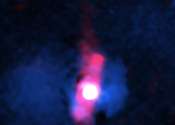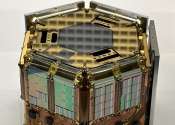Star Light, Star Bright, Its Explanation is Out of Sight
(PhysOrg.com) -- A mysterious flash of light from somewhere near or far in the universe is still keeping astronomers in the dark long after it was first detected by NASA's Hubble Space Telescope in 2006. It might represent ...









